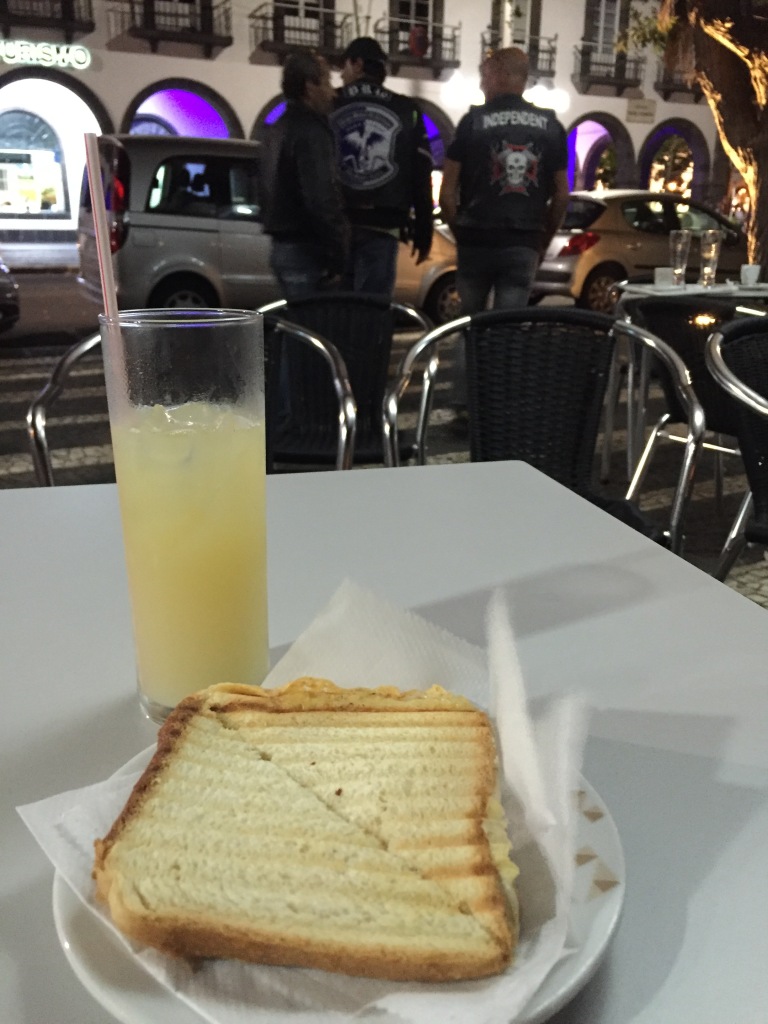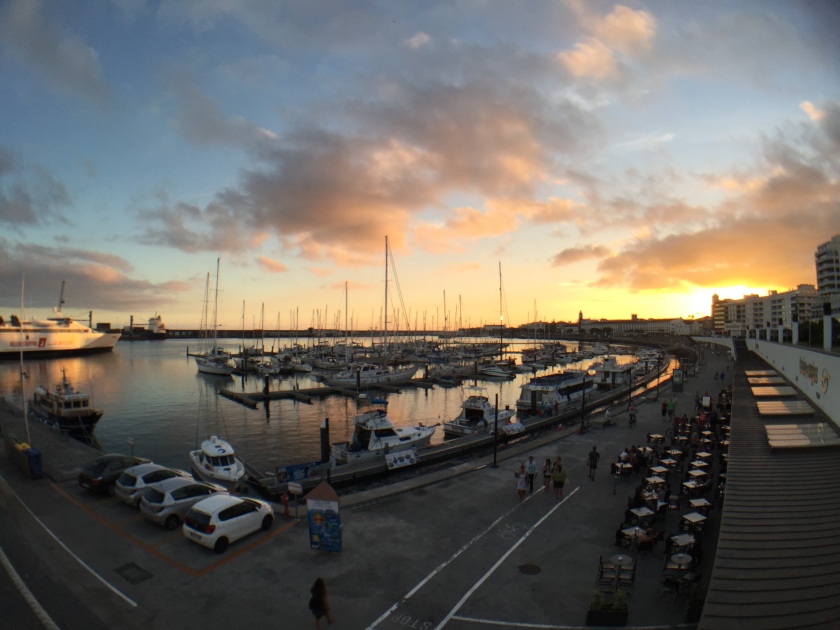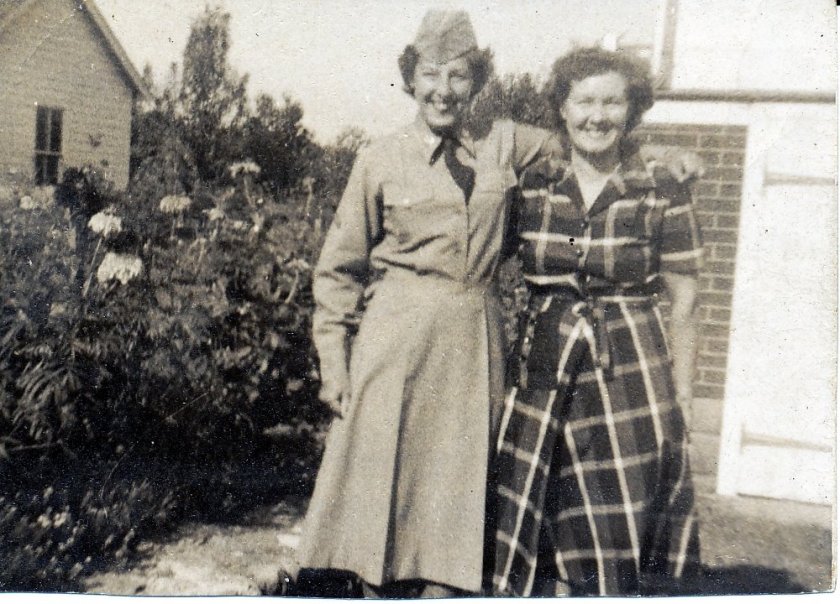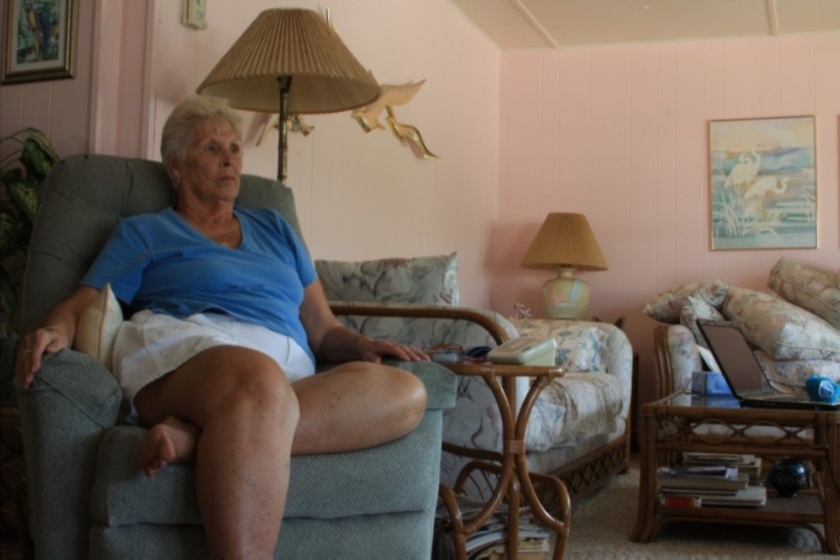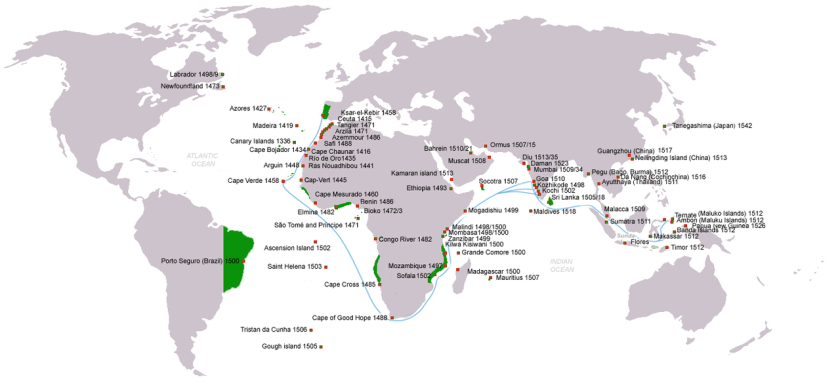It’s a trope that’s been with me since childhood, seeped through my skin, feathering out through my muscles, and into my bones: Tijuana is 70’s rock, it’s Carlos Santana, the Grateful Dead; it’s dive bars, lawlessness, a Vegas for long haired hippies.
Trope or truth, TJ is worth a trip.
Here you’ll find tips, a “how-to” guide on getting across the border, what to eat and drink once you arrive, and an experience that’s a sign of the times.
My top six tips:
- Bring your passport.
- Your driver’s license won’t do in a post 9/11 world.
- Don’t change your dollars into pesos.
- Everyone accepts dollars, though they might give you change in pesos, and your credit card will be accepted most everywhere.
- Use Ubers.
- They’re ubiquitous, cheap, safer than taxis, and most businesses will freely give you their wifi password to hail one on the app.
- Drink the local wine and mezcal.
- Yes, Mexico cultivates wine! And yes, pleasant mezcal exists!
- Eat everything,
- including the crushed ant salt accompanying the mezcal at GSalinas and chili covered dried mangoes at Mercado Hildago (read on).
- Visit the wall.
- It will make you reconsider borders control, immigration, and the resiliency of family.
Crossing the border
Prepare: bring water, hat, passport
There are two border crossings, one at San Ysidro, the other 8 miles to the east, at Otay Mesa. My number one tip: check the news and border crossing times before you go! San Ysidro is the busiest land border in the world; 50,000 cars and 25,000 pedestrians make the trip every day, and the planned expansion and modernization of the border crossing will compound wait times during renovations.
For the most part, getting into Mexico is relatively easy, if you don’t need a visa (Americans do not). Getting back into the U.S. can be a more time consuming, with lines up to two hours long. I got lucky: I walked into Mexico on Saturday afternoon and walked back across the border to the U.S. Sunday evening; both crossings took no longer than 30 minutes.
While you should schedule your travel to avoid long waits or border closings, in the name of sensitivity, remember tourists make up only a portion of the thousands of people moving across the border everyday. The large majority are Mexicans who legally cross the border every morning seeking better wages north of the border in physically demanding jobs. Students of all ages begin arriving at the border crossing as early as 5:30am to attend school in the suburbs of San Diego. They take commuting to a whole other level, and it sounds exhausting. If you’re standing in the sun for an hour on your way back into the U.S., give yourself some perspective, and remember you chose to do this for fun.
Option 1: Take the trolley from San Diego to the last stop, San Ysidro, and walk across the border to Tijuana.
What you should know:
- A 30-minute trolley ride from San Ysidro links Tijuana to San Diego, so if you’re carless like me and looking to get back and forth from SD, it’s best to use this crossing rather than Otay Mesa.
- The trolley runs every 10-25 minutes, and will cost you less than $3. Find the schedule here.
- Take water and a hat; entry lines can be long, but it’s rare compared to the lines leaving Mexico during rush hours.
- I found the crossing to be an easy and pleasant adventure. There was shade, a huge Mexican flag undulating in the wind, and border patrol agents gave me their opinions on the best time to cross back into the U.S. the next day (ask them!)

Option 2: If you’re driving, leave your car on the American side.
What you should know:
- Drivers can be in long lines for up to four hours, so if you aren’t road tripping beyond Tijuana, park your car at San Ysidro. It’s safe and accessible.
- Tijuana is full of cheap and ubiquitous Ubers, so you have no worries when it comes to getting around the city.
- From San Diego, get off the 805 at the exit marked, “last US exit, Camino
 de la Plaza.” There’s a parking lot a block away from “Ped X,” the pedestrian border crossing at San Ysidro. Park there for about $15/day, and walk across.
de la Plaza.” There’s a parking lot a block away from “Ped X,” the pedestrian border crossing at San Ysidro. Park there for about $15/day, and walk across. - If you absolutely must drive across the border, check and compare your wait times between San Ysidro and Otay Mesa crossings.
- If you will be crossing the border frequently, get a Sentri pass, a pre-approved clearance much like Global Entry. It will expedite your crossing.
Option 3: Drive or walk across the border at Otay Mesa.
What you should know:
- There’s a sky bridge! But wait…
- The main benefit of the Otay Mesa crossing is it links you directly to the Tijuana airport, where flights to neighboring countries or other Mexican cities are cheaper than flying out of San Diego.
- Like the San Ysidro crossing, you can park your car on the American side ($17), walk across the toll (also $17) skybridge to the airport, and board your flight without ever having set foot in Tijuana. It works so well that two million people a year have used this option since it opened.
- If you’re driving, remember to check and compare your wait times between the two crossings, and get a Sentri card if you’ll be crossing frequently.
 After making it through the border crossing formalities, I’m sure you’re thirsty for a local IPA and hungry for some tacos, and I know just the spot.
After making it through the border crossing formalities, I’m sure you’re thirsty for a local IPA and hungry for some tacos, and I know just the spot.
Telefonica Gastro Park
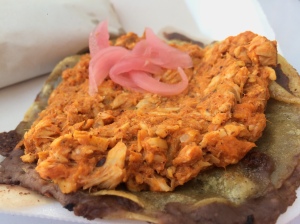
From the road, Telefonica Gastro Park is nondescript, unlike the foodie heaven within. Pulling into a tiny, well-managed Tetris-like parking lot, I was surprised at how compact, yet expansive the gastro park was. Food trucks lined the perimeter, surrounding two levels of outdoor seating reminiscent of a San Franciscan parklet. M oving deeper into the park, I uncovered yet another food truck, this one offering salchichas (sausage) garnished with bacon jam on a chiabatta roll. BACON JAM! Deeper in the belly of Telefonica you’ll find locally brewed beers to wash down the gluttonous amounts of gourmet tacos you’re about to eat.
oving deeper into the park, I uncovered yet another food truck, this one offering salchichas (sausage) garnished with bacon jam on a chiabatta roll. BACON JAM! Deeper in the belly of Telefonica you’ll find locally brewed beers to wash down the gluttonous amounts of gourmet tacos you’re about to eat.
Telefonica took Taco Tuesday to a whole other level, and I will forever be disappointed by non-Tijuanese tacos.
 A Low-Key Evening
A Low-Key Evening
GSalinas Enoteca Wine Bar warmed my heart…and my throat. Locally made wines and mezcals lined the walls of this tasting room, mimicking the coziness of a home library. The affable shopkeeper taught us the difference between mezcal and tequila. Mezcal is generally too smoky for my taste, but she recommend Don Mateo based on my preference. As she poured a tasting, I noticed five circular tattoos on her forearm: the phases of jUPITER. They mirrored the orange slices she placed on my plate beside a homemade spicy salt blend containing ground up ants.
I anticipated a burning sensation, readied the orange slice by dipping it in the salty ants, sipped the mescal, sucked the juice from the orange, and basked in the glory of it all…even the ants. It was a delectable experience, with impeccable service.
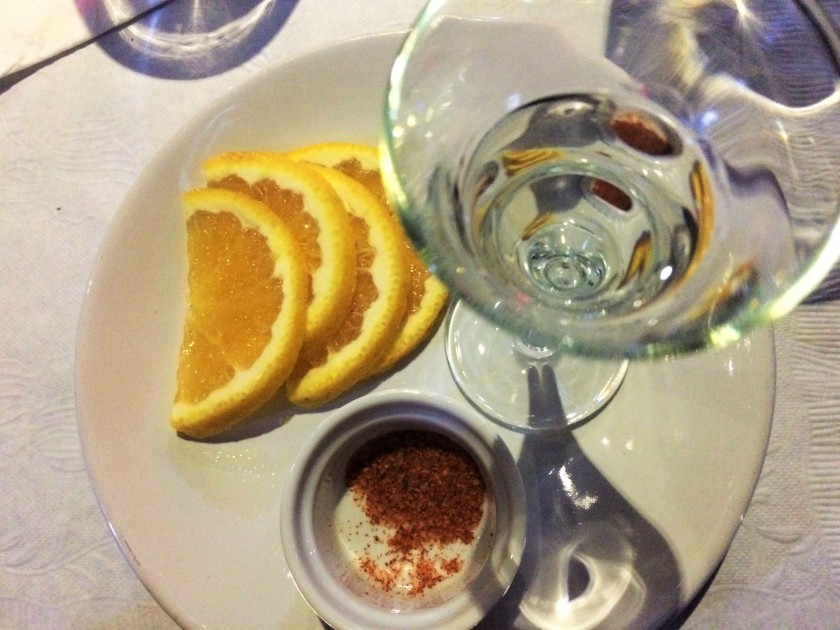
 Rest
Rest
I stayed in a ridiculously cheap Airbnb ($16/night) on one of the hottest nights of the years. Temperatures reached into the hundreds up and down the West Coast while forest fires raged. Apparently Tijuana is usually so temperate they don’t need AC, so there wasn’t any. Unfortunately, this particular night was 102 degrees. I took five showers throughout the night to cool off, laying with sopping wet hair, getting a few minutes or hours in before I dried off and began sweating again. The house was in a decent neighborhood, a 20 minute drive from the city center, though it was only a $5 Uber ride. It fit me in my 20’s: looking for cheap places to stay, with less regard for comfort. Me in my 30’s found it to be too much like a bachelor pad. For less experienced travelers or those willing to spend more, you may want to look for hotels close to the city center, along Avenida de la Revolucion.
 Breakfast
Breakfast
The best part of waking up, is Praga in your cup. They serve a damn good macchiato and with outdoor seating along the sidewalk, it’s the perfect spot to people watch while you sip. Breakfast is decent too, and it’s conveniently located diagonal from a fairly priced silver shop called Emporium run by a friendly bilingual gentlemen, and across from the restaurant whose chef famously invented the Caesar salad.
 Mercado Hidalgo
Mercado Hidalgo
Shop like a local: dried mangoes covered with chili powder (my personal fav), mariachi costumes, Donald Trump piñatas, traditional huipil shirts…Mercado Hidalgo has it all. It’s so much fun to browse and try the flavorful local sweets, unusual fruit, and sip coconut water right from the whole coconut.
 Tacos el Gordo
Tacos el Gordo
I have a soft spot (ironically) for anyone named Gordo, so I was convinced I had to visit Tacos el Gordo. Here’s another reminder to not judge a book by its cover: it wasn’t as mind-blowing as I had anticipated. It looked better than it tasted, but the atmosphere was delightful. Like an outdoor diner in the round, locals saddled up to the barstools to shout their orders, and the servers reminded me of high-school lunch ladies: sweet, no-nonsense caretakers.  As I ate my taco a woman confessed to me that she drove all the way across the border from Chula Vista, a suburb of San Diego, just for these tacos. Her name was Pilar, and she stood while she ate, still wearing her work uniform. There was a Tacos el Gordo closer to her house in the U.S., but she adamantly insisted they are NOT the same. I could relate–it’s like a pizzeria in south Jersey advertising “New York style pizza.” Definitely never.
As I ate my taco a woman confessed to me that she drove all the way across the border from Chula Vista, a suburb of San Diego, just for these tacos. Her name was Pilar, and she stood while she ate, still wearing her work uniform. There was a Tacos el Gordo closer to her house in the U.S., but she adamantly insisted they are NOT the same. I could relate–it’s like a pizzeria in south Jersey advertising “New York style pizza.” Definitely never.
A Tijuana Tidbit
 Pasaje Rodriguez
Pasaje Rodriguez
Pasaje Rodriguez is a small covered alley reminiscent of a less frenzied Moroccan souk, the Brooklyn of Tijuana. Artists can actually afford to live in Tijuana. This affordability allows unfettered creativity, as artists are unbeholden to day jobs or the siphoning of their creativity into the corporate world. The walls of the pasaje are decorated with colorful murals rivaling Bushwick’s, each with a socially conscious message. New age hippies sell handmade crystal jewelry beside an indigenous woman with her daughter selling traditional woven shirts and dresses (huipil). I needed no convincing to buy a huipil, since Frida Kahlo is my fashion inspiration and feminist hero. In doing so, I’m proud to support women’s work and a local tradition. I chose a pink and white dress, and a black shirt with shockingly red roses woven into the neckline.
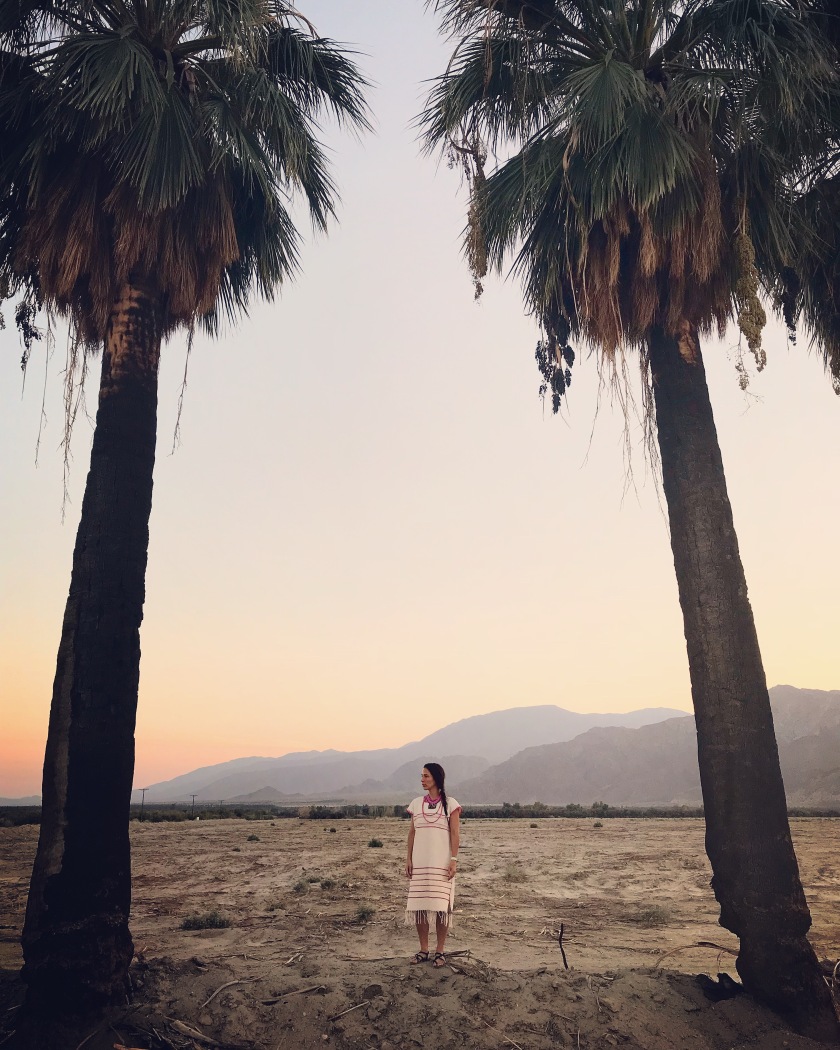
As an aside: it’s vital to support women’s businesses when you travel. Generally, women aren’t in the public sphere as often as men; they aren’t driving our taxis or vending in the street. Their work is largely invisible, done behind closed doors, so we have to be diligent about economically supporting their efforts. It’s something I challenge myself to do in every country I visit. Try it. You’ll be amazed at how segregated some societies are, or how educational barriers make it more difficult to communicate with women (if you don’t know the local language). My second reward, beyond my huipil, was this particular woman directed me to “café mas rico” further down the pasaje and she was right, it was muy rico.
The pasaje will continue to surprise you; as you head in deeper, you’ll find a comic book store, a ceramics studio, and coffee shops with a digital workspace vibe.

 The Ride
The Ride
I headed to the wall dividing the U.S. from Mexico on a Sunday. I took an Uber there, observing people through the window. Eventually I asked the driver where the dark-skinned people dressed in Sunday church clothes were from–were they African? He said no, they were Haitian, and they came after the earthquake. He went on to say some people were upset they were still there, accusing them of siphoning off the welfare state. The rhetoric sounded familiar. He, however, didn’t perceive it that way, and said from his experience, they seemed like hard-working people who experienced a traumatic event and were trying to make a better life for themselves. I was relieved at his analysis and judged him to be a tolerant person.

I asked more questions, and he revealed he used to live in the U.S., in Salem, Washington. He didn’t choose to move back to Tijuana–he was deported. He easily admitted this to me, said he assaulted his ex-wife, was arrested, sent to prison and eventually to a detention center in Tacoma. He blamed himself “for getting into trouble,” but I couldn’t tell if he was regretful that he got caught or that he assaulted her. When he returned to TJ, he became a taxi driver, but was robbed at gun point, the thief taking his phone and cash, but not the car. He subsequently switched to driving for Uber.
The two stories are interwoven: as U.S deportations increased after 9/11 and skyrocketed during the Obama era, people returned to Tijuana without skills that matched market demand. Unemployment and homelessness increased, followed by crime, trapping the city in a cycle of further economic depression as media coverage of violent Mexican gangs scared tourists away. In the past few years the industry has bounced back to a certain degree. As the Uber made its way toward the wall, I saw a man shooting up, and others laying on a grassy area under a bridge, not unlike Tompkins Square Park in New York City. Personally, I felt relatively safe, though I did take precautions against walking at night and used Ubers instead of cabs, because drivers are traceable, vetted and cashless. There are still no-go zones for tourists and locals will let you know where those are, so chat with them. Perspective is important here: locals are much more affected in their daily lives by crime and governmental neglect than tourists. Speaking of which…
The Wall

The driver dropped me at Playa de Tijuana, wishing me well and directing me toward the wall–border fence, really. The fence was painted with affirmations of peace and togetherness in colorful happy tones. Families peered through the tiny gaps, into the eyes of their siblings, mothers, and cousins in America. A woman settled into a beach chair across from a gentleman on the American side similarly equipped, with the addition of a beach umbrella. The woman primped her hair and leaned in toward the man, toward the fence. I felt embarrassed to witness such a private moment rendered so public, so I moved on.

On the American side, border patrol agents, a bicyclist, two blonde women and two Border Angel activists mingled–not with each other, but with us through the fence on the Mexican side. I felt ashamed to be there, to so easily be able to perform the magic of walking through walls. Seagulls casually flew back and forth over the international boundary, mocking the people below. The fence seemed such a human folly, a superficial device to soothe crippling fear.





 If you’re one of the lucky ones, it’s time to perform the magic of walking through walls. The pathway is winding and vaguely marked. My fellow cross-overs and I look at each other for reassurance, but we’re all confused and unsure. Finally we enter a haphazardly constructed room with three U.S. customs agents scanning passports and asking questions some of us mistake for genuine interest. A dog on a leash roams, invades our space to sniff us out. A man, one of the cross-overs, is taken to a room with no windows for further questioning. I wonder what unsatisfactory answer he gave that prompted this walk of doom. I’m welcomed to America by the friendly customs agent. I offer a closed-lip smile in return, while silently wishing my superpowers were transferable.
If you’re one of the lucky ones, it’s time to perform the magic of walking through walls. The pathway is winding and vaguely marked. My fellow cross-overs and I look at each other for reassurance, but we’re all confused and unsure. Finally we enter a haphazardly constructed room with three U.S. customs agents scanning passports and asking questions some of us mistake for genuine interest. A dog on a leash roams, invades our space to sniff us out. A man, one of the cross-overs, is taken to a room with no windows for further questioning. I wonder what unsatisfactory answer he gave that prompted this walk of doom. I’m welcomed to America by the friendly customs agent. I offer a closed-lip smile in return, while silently wishing my superpowers were transferable.
Extra-time? Try these.
- Mision 19 is good for bone marrow
- Verde y Crema for beer tasting
- La Mezcalera for a relaxed after-work spot
- Los Remedios for a classic cantina
- Auditorio Municipal Fausto for lucha libre on Friday night. That’s gotta be epic, and I’m so sorry I missed it. All the more reason to come back!


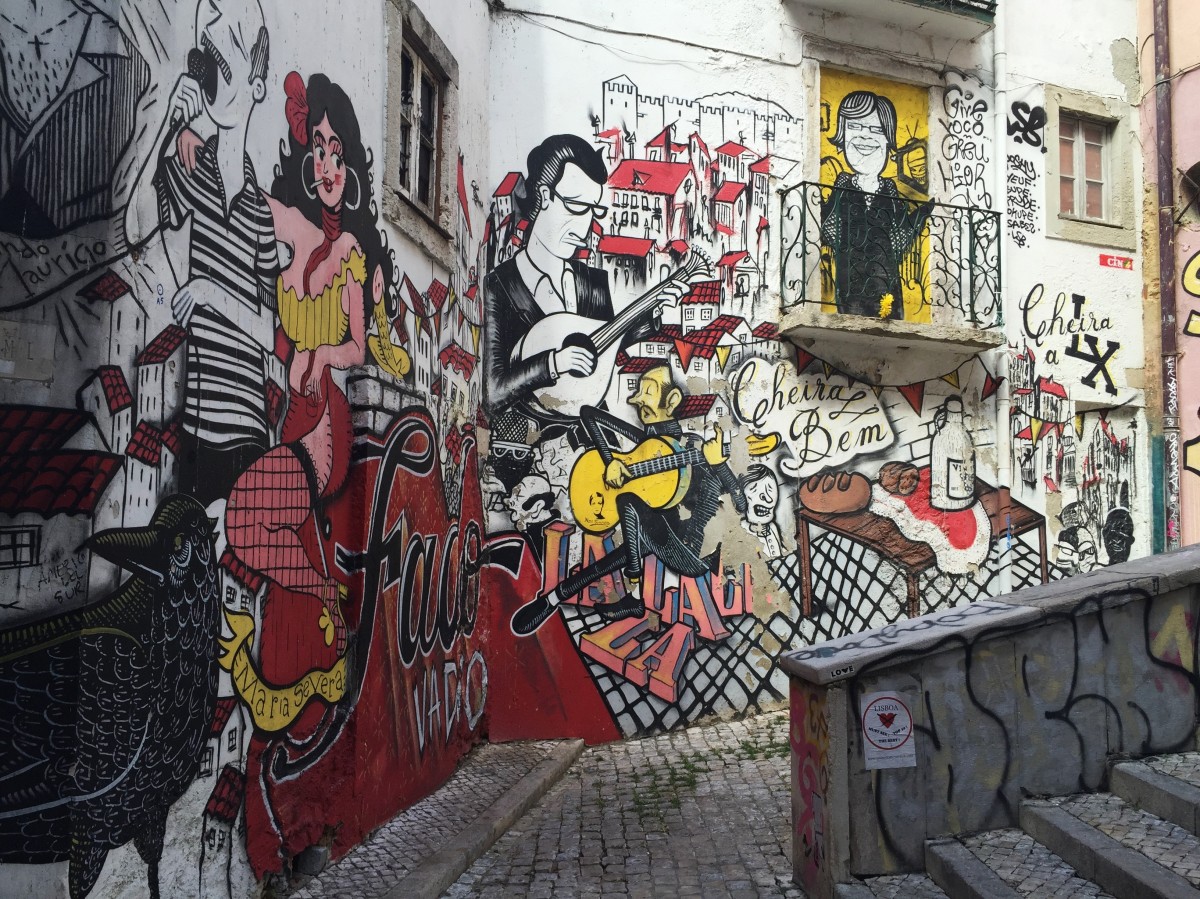










 centuries, the world's most
centuries, the world's most 



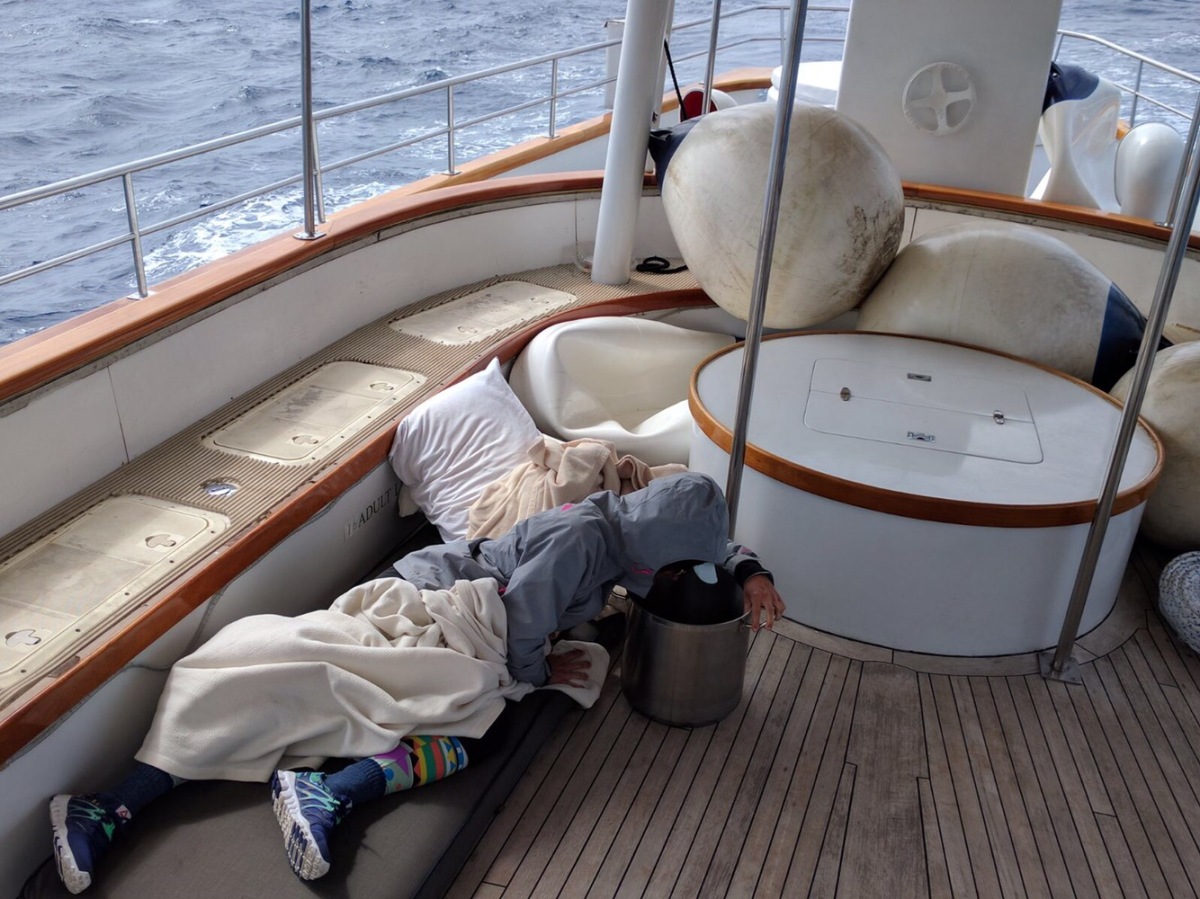







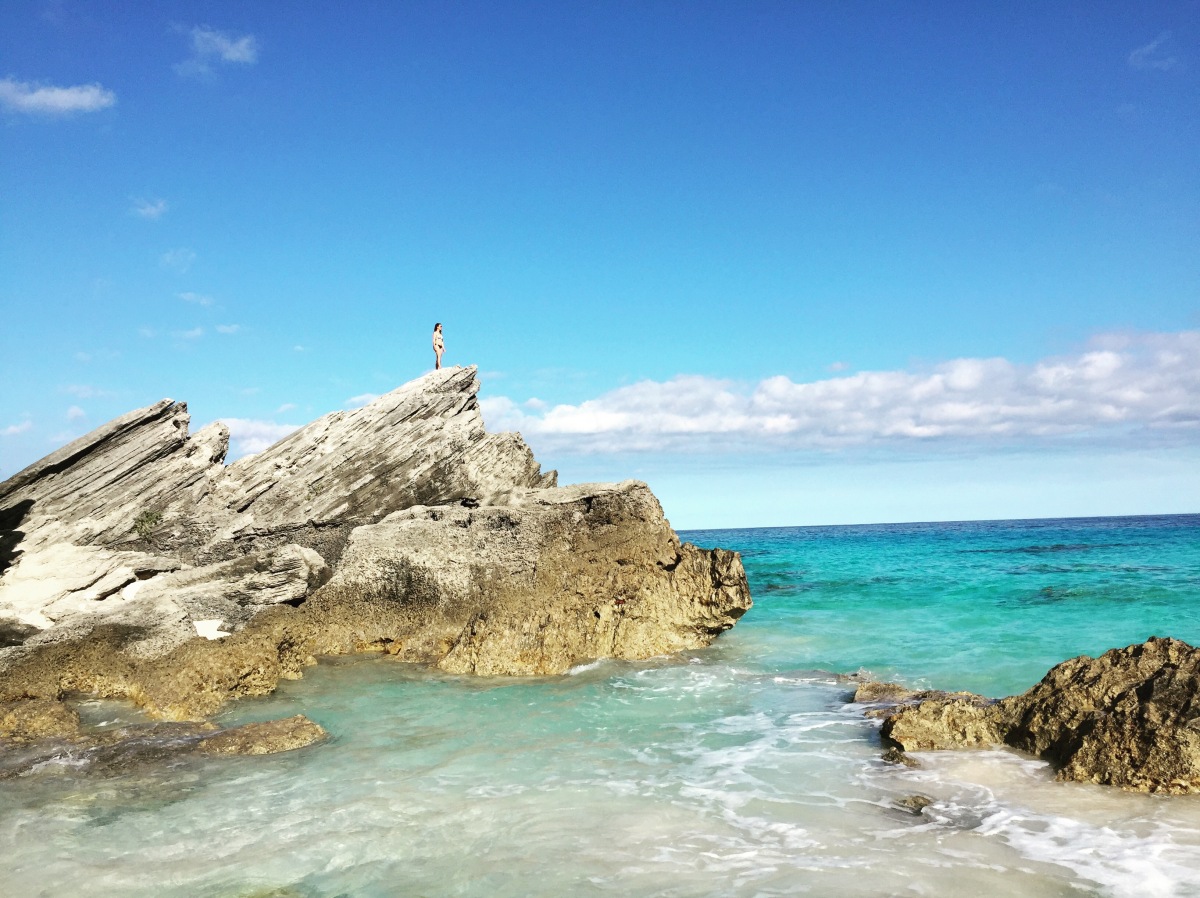

 The island is relatively small, only 22 miles long by 1 mile wide. Despite its tiny stature, taxis are sooooo expensive–and I say this as a New Yorker. I’m talking a $5.15 initial fee, and $2.75/mile; after-hours rates increase by 25%. The bus comes every 15-20 minutes, and you can get a transportation
The island is relatively small, only 22 miles long by 1 mile wide. Despite its tiny stature, taxis are sooooo expensive–and I say this as a New Yorker. I’m talking a $5.15 initial fee, and $2.75/mile; after-hours rates increase by 25%. The bus comes every 15-20 minutes, and you can get a transportation  conversations I had in my four days were with taxis drivers. We talked
conversations I had in my four days were with taxis drivers. We talked  Your other options are to rent a moped (about $50/day), or walk
Your other options are to rent a moped (about $50/day), or walk  shorter distances, though sidewalks often end abruptly and it can be terrifying looking at an oncoming car and pondering the possibility of it smashing you against the limestone wall. I’d rather not end up like this guy: <—————
shorter distances, though sidewalks often end abruptly and it can be terrifying looking at an oncoming car and pondering the possibility of it smashing you against the limestone wall. I’d rather not end up like this guy: <————— best one is at the Swizzle Inn. It’s a hyped up tourist spot, but the hype is real. I should know–I had about 5 Swizzles from 5 different places in 3 days. There are two locations, one on the
best one is at the Swizzle Inn. It’s a hyped up tourist spot, but the hype is real. I should know–I had about 5 Swizzles from 5 different places in 3 days. There are two locations, one on the 



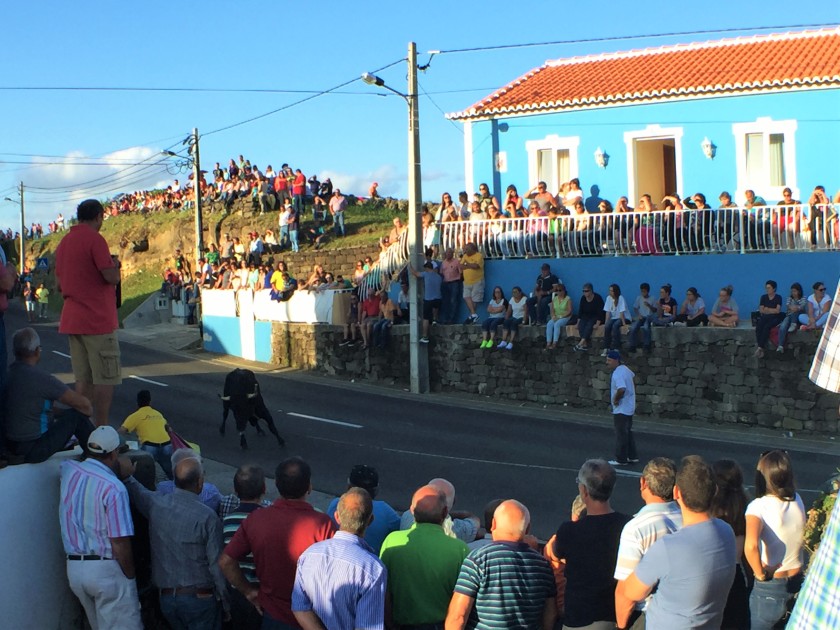
 donuts, older men in short-sleeved button-down shirts tucked into their starched blue jeans line up behind street level barricades while women and young children sit along the volcanic stone hedge walls that are prevalent in the Azores.
donuts, older men in short-sleeved button-down shirts tucked into their starched blue jeans line up behind street level barricades while women and young children sit along the volcanic stone hedge walls that are prevalent in the Azores. 







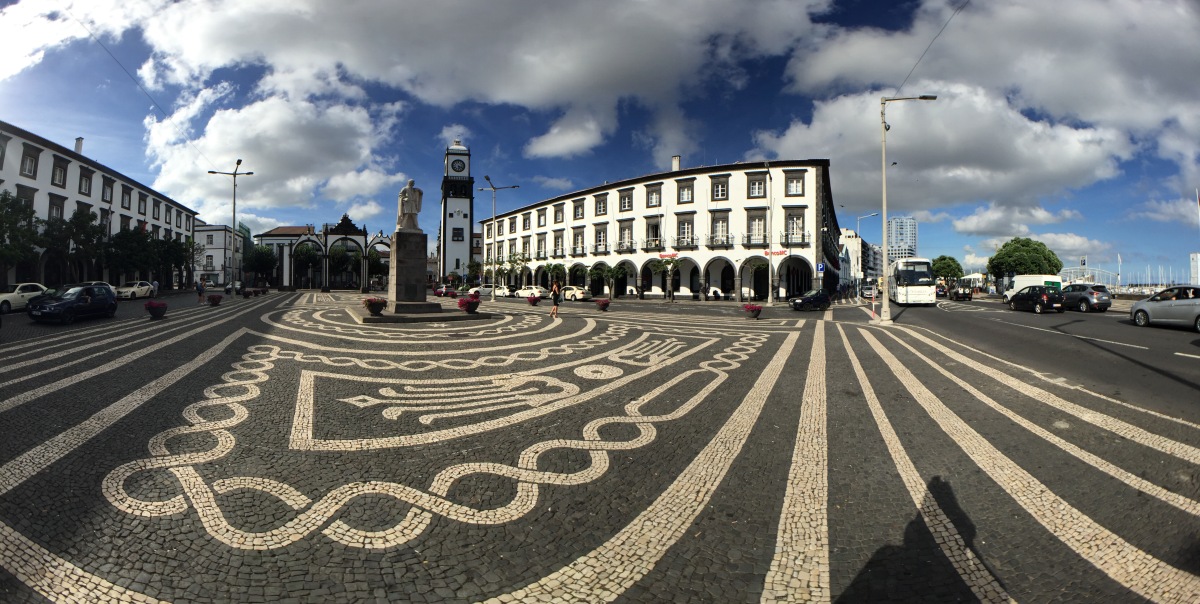
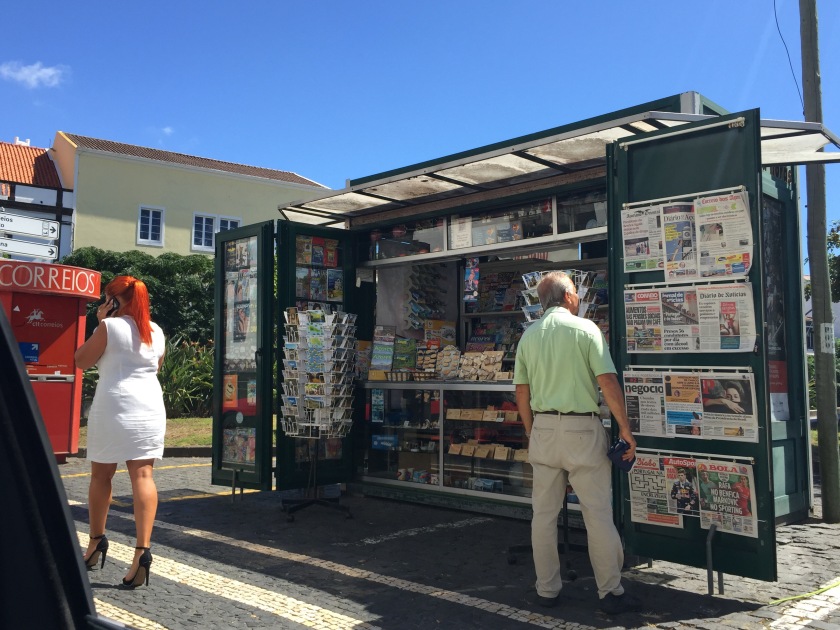
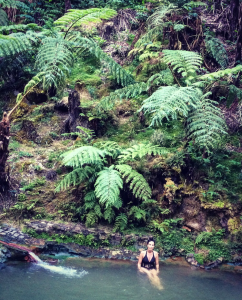 visual feast for the eyes: rich green plants and rust colored boulders span the hot springs, while birdsong echoes throughout the jungle. Absorbing this surreal scene from a pool of hot thermal water is curative for body and soul.
visual feast for the eyes: rich green plants and rust colored boulders span the hot springs, while birdsong echoes throughout the jungle. Absorbing this surreal scene from a pool of hot thermal water is curative for body and soul.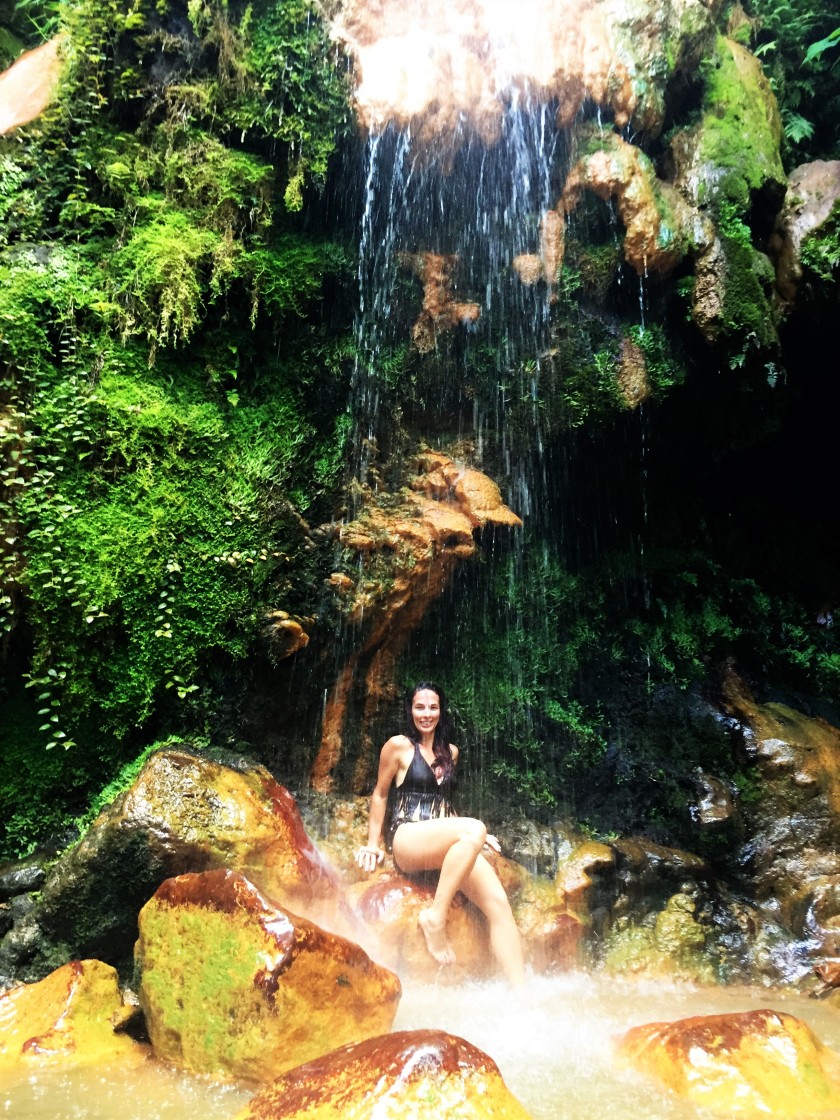
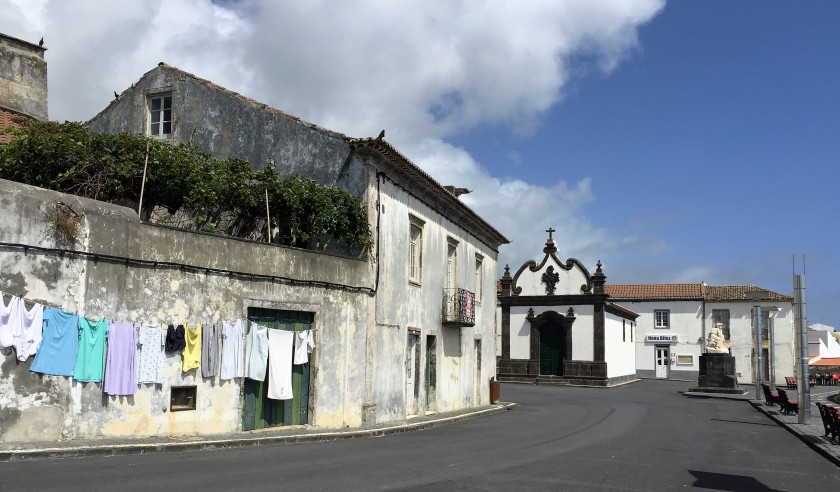
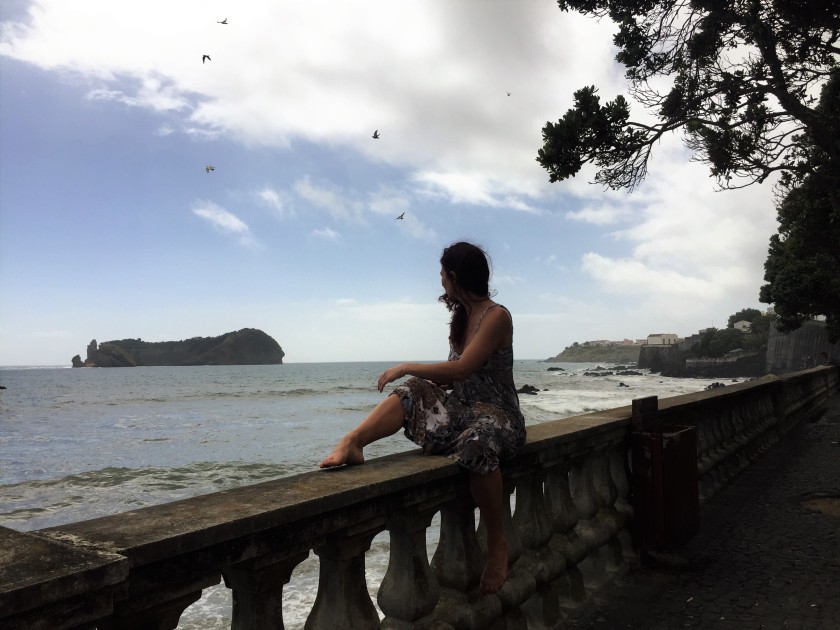
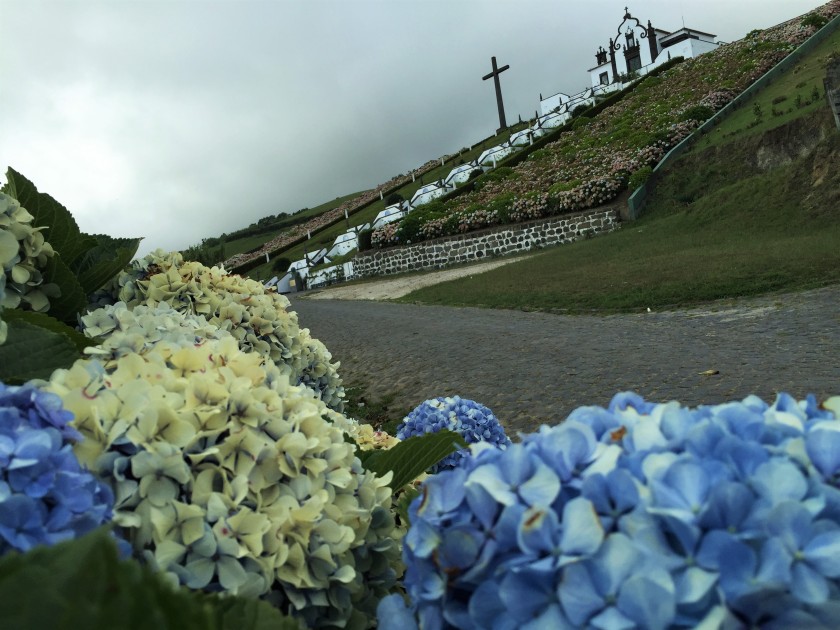
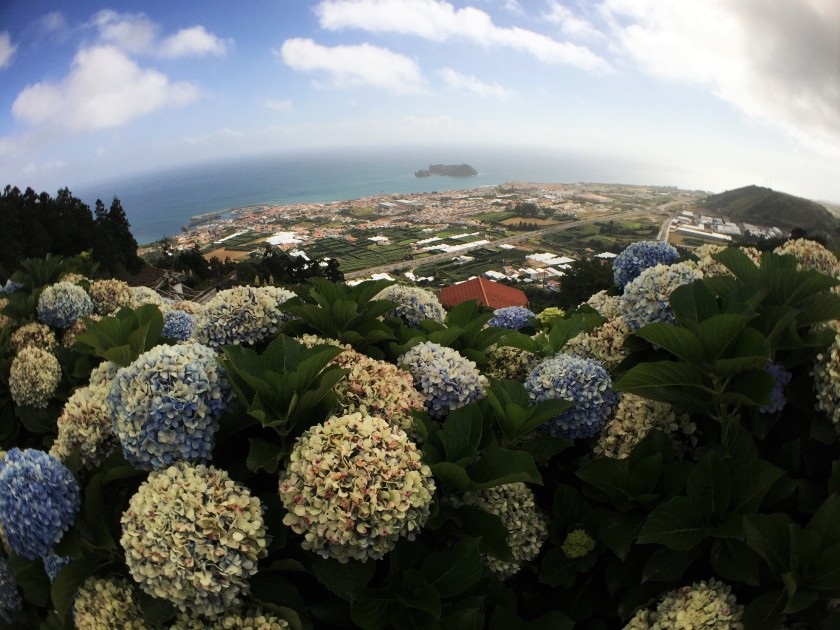
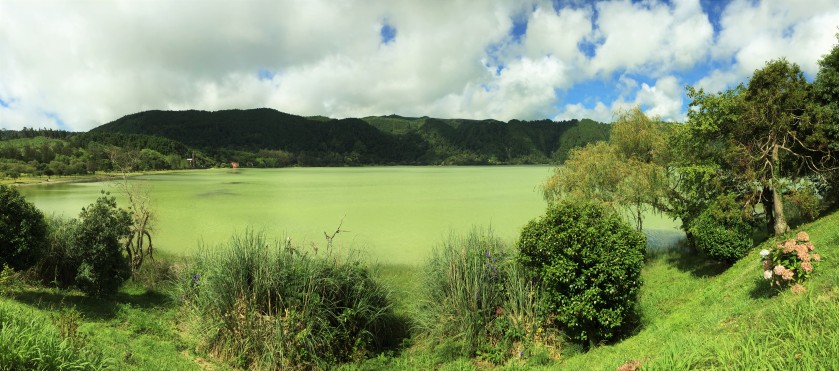
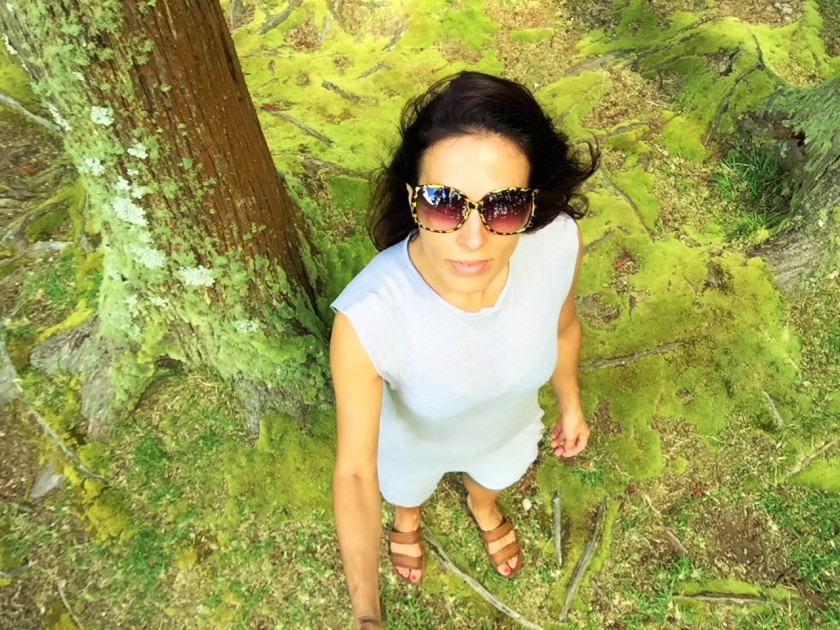
 Amenities include a parking lot, changing rooms and lockers, and at 4 Euros for the entry fee, it’s a bargain spa experience. The sulfur will stain your bathing suit orange, so wear an old or dark one. Five different hot pots offer a range of temperatures, from hot to warm, while artificial waterfalls massage your aching neck. There’s also a gift shop with artsy jewelry, a rarity aside from the airport shops. They’re open until 11pm, and if you don’t have a towel, you can rent one there.
Amenities include a parking lot, changing rooms and lockers, and at 4 Euros for the entry fee, it’s a bargain spa experience. The sulfur will stain your bathing suit orange, so wear an old or dark one. Five different hot pots offer a range of temperatures, from hot to warm, while artificial waterfalls massage your aching neck. There’s also a gift shop with artsy jewelry, a rarity aside from the airport shops. They’re open until 11pm, and if you don’t have a towel, you can rent one there.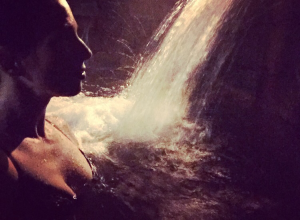

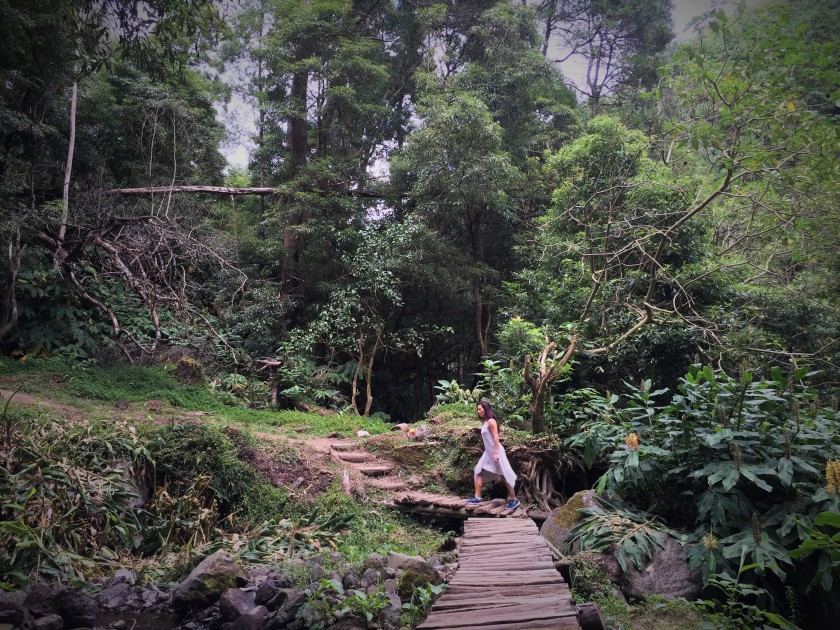
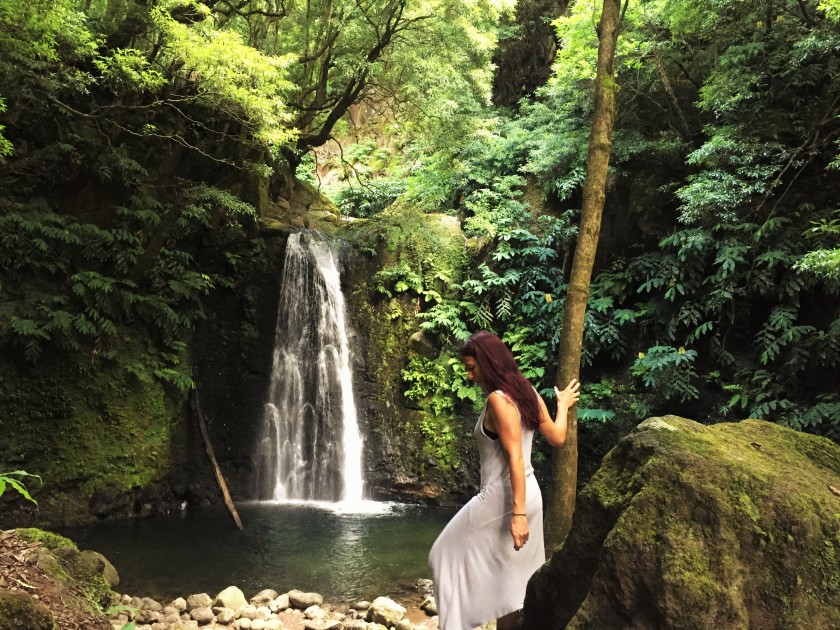
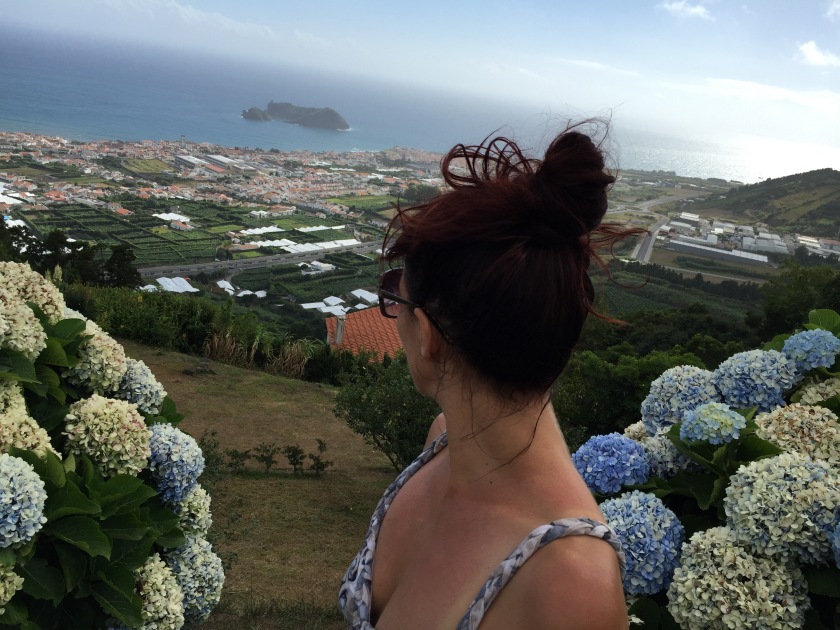

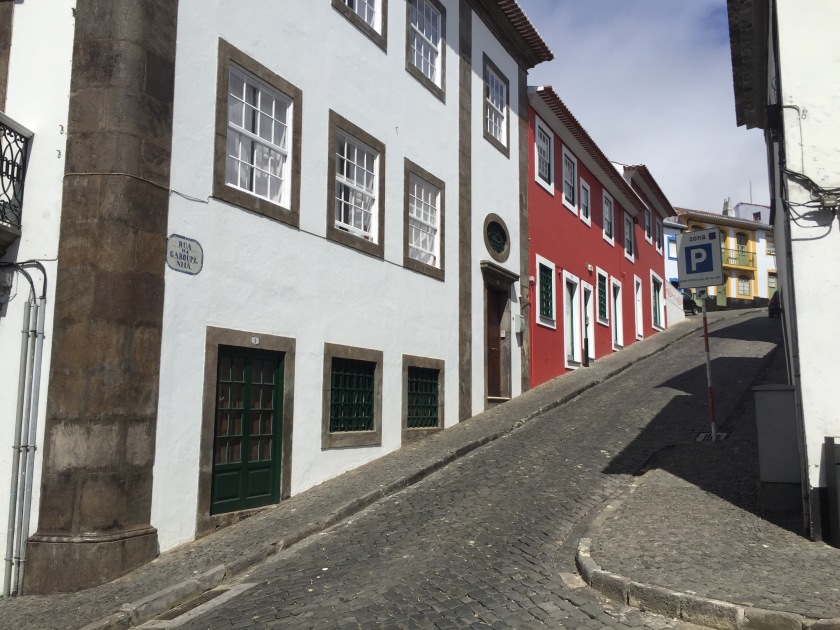
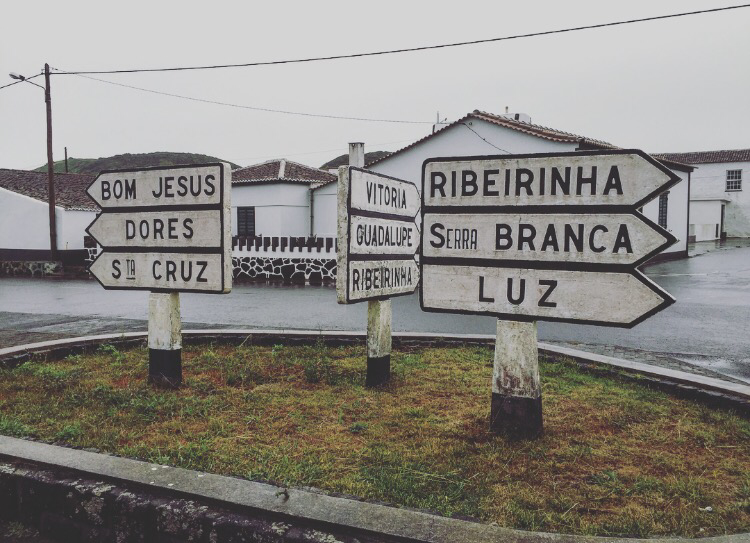
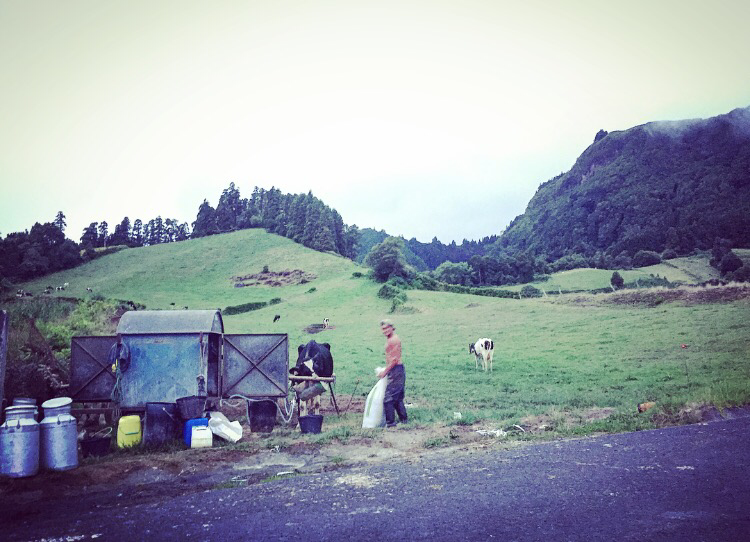
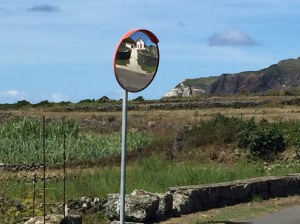
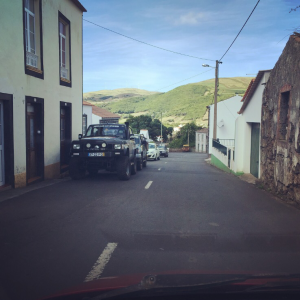 Brooklyn, but, people park in the traffic lane, so swerving or slamming on the brake for oncoming traffic is the norm, as already narrow streets become one way.
Brooklyn, but, people park in the traffic lane, so swerving or slamming on the brake for oncoming traffic is the norm, as already narrow streets become one way.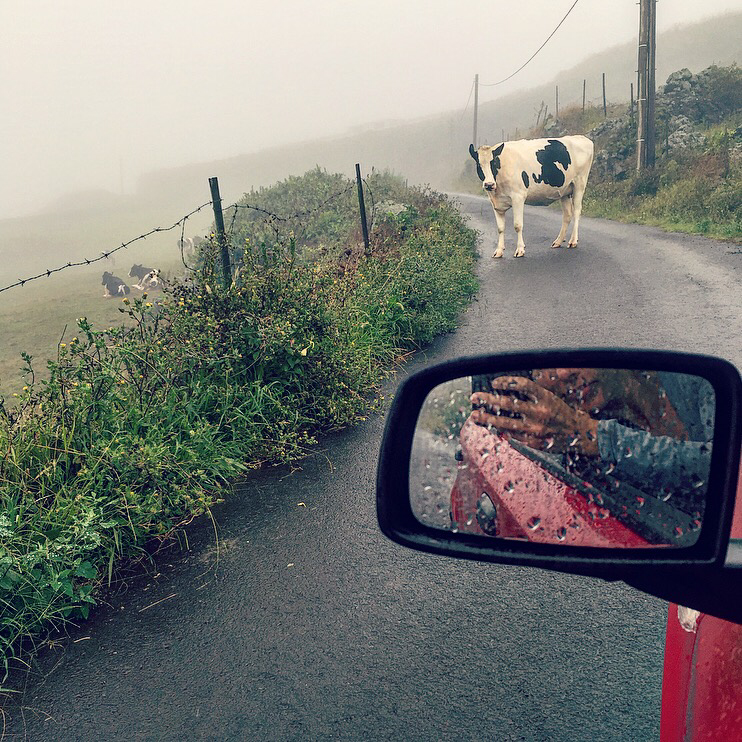
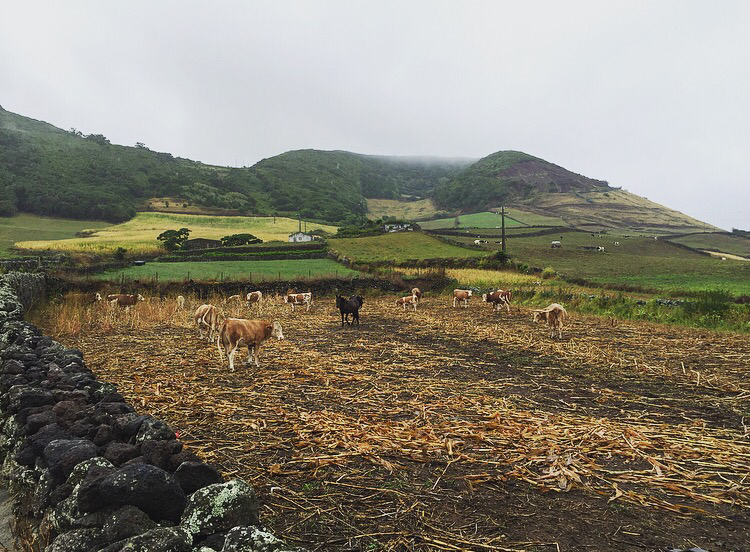
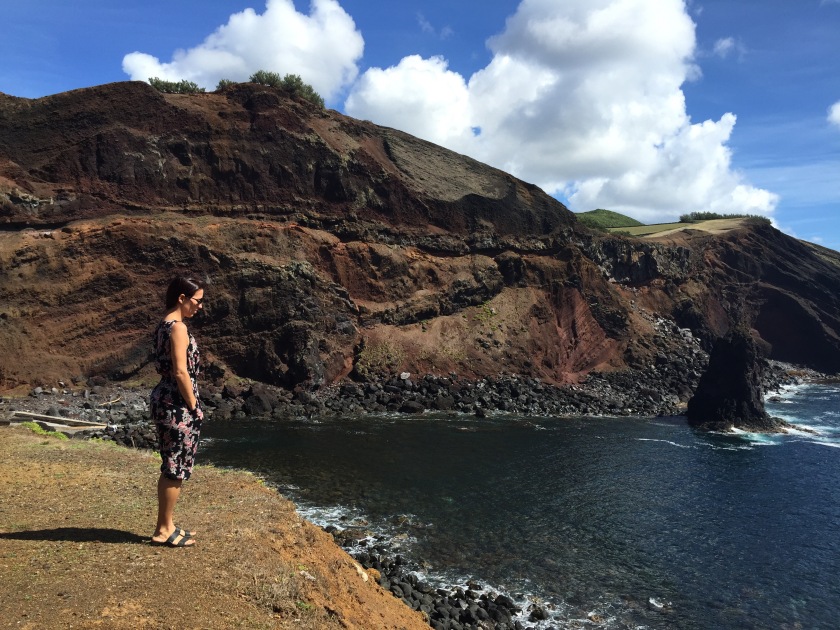
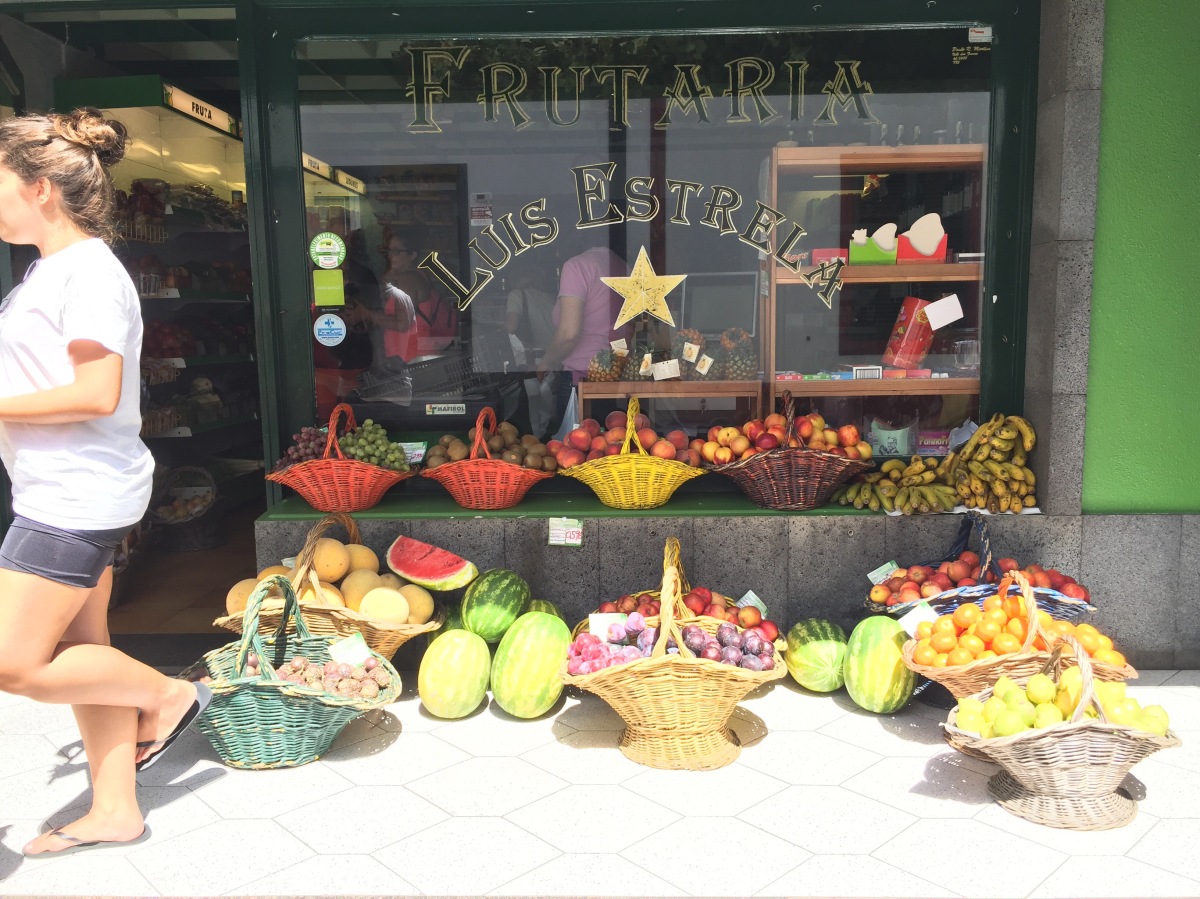
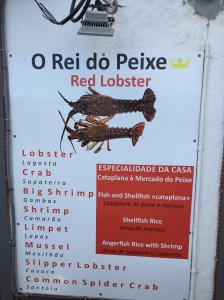 industry makes for some dining difficulties.
industry makes for some dining difficulties.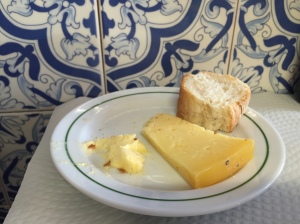
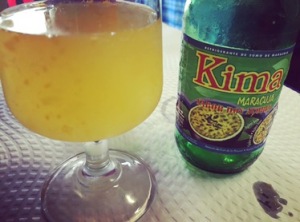

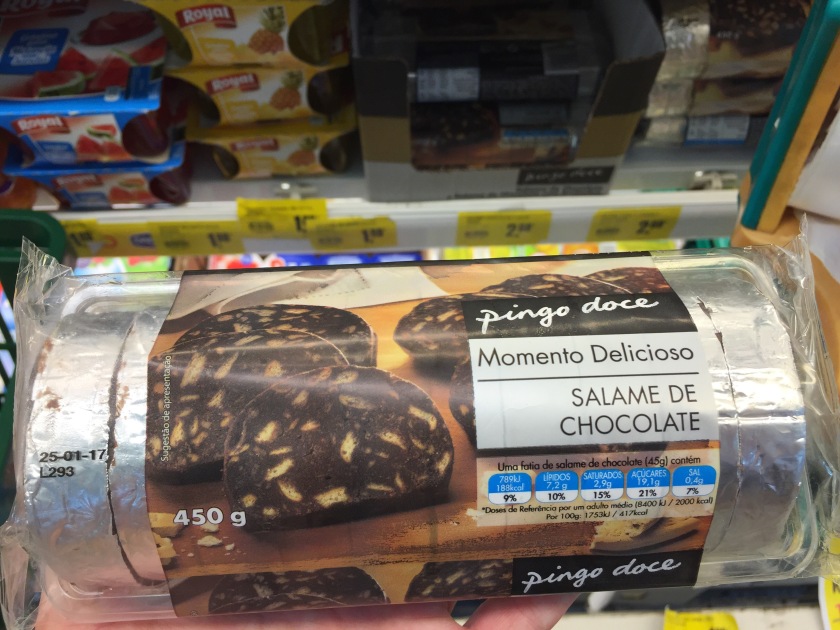
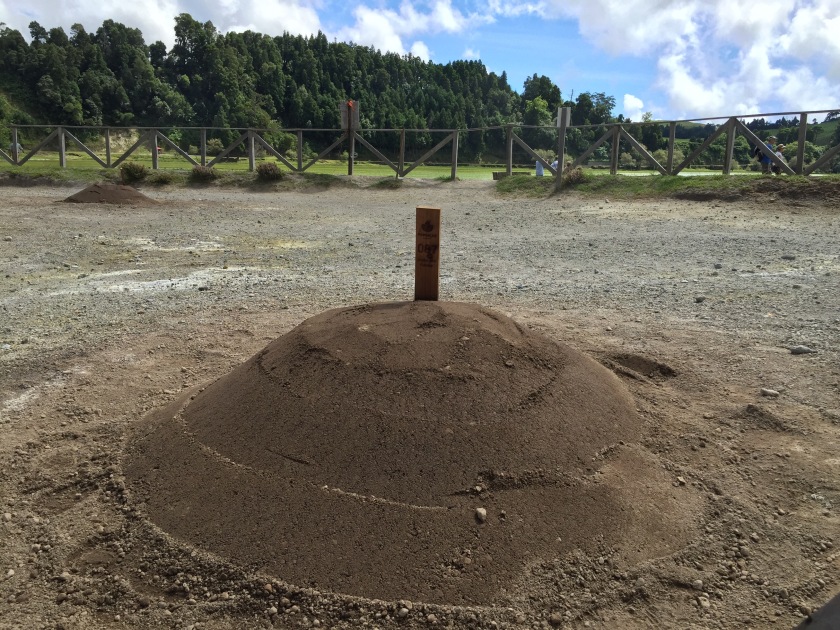
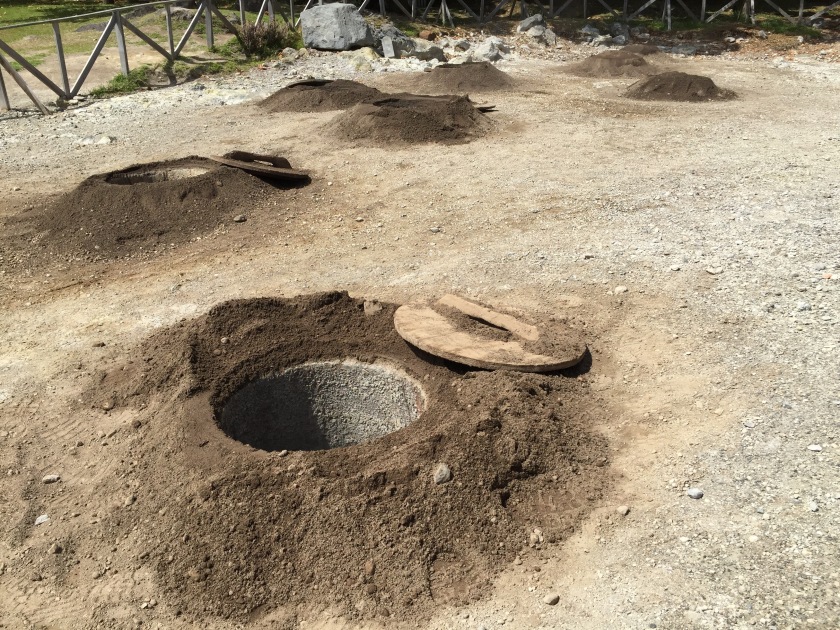
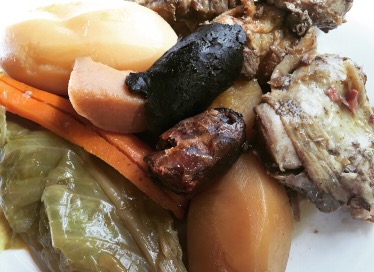
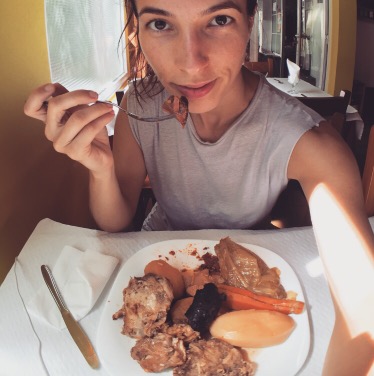
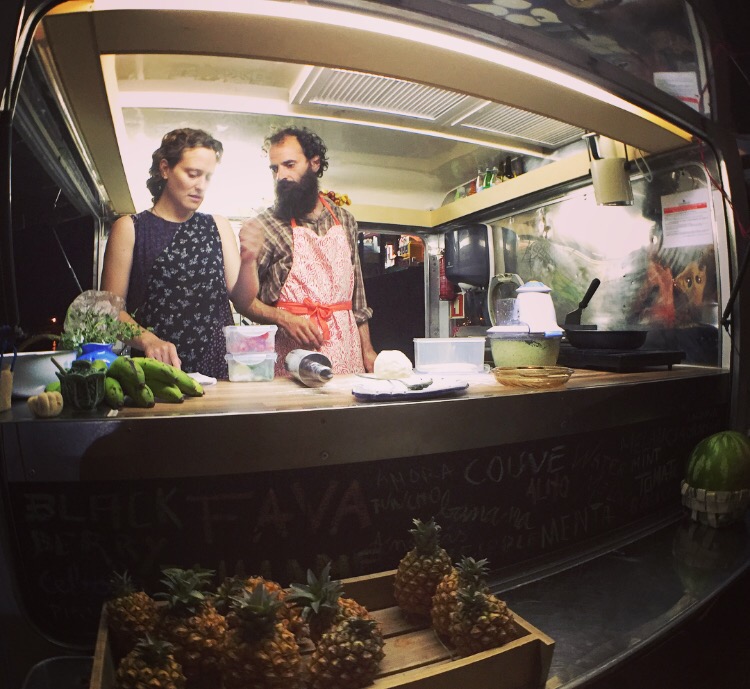
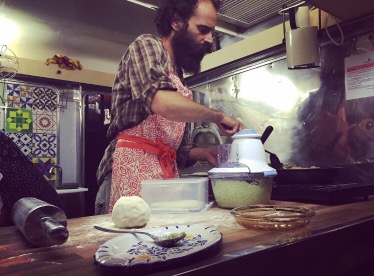
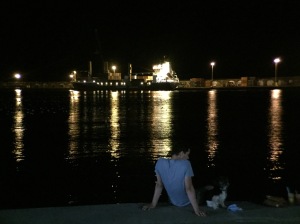
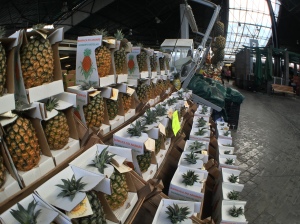 well be on Sao Miguel’s flag they’re so ubiquitous (and more succulent than the average). It’s here you can buy the buttery, tangy Sao Jorge
well be on Sao Miguel’s flag they’re so ubiquitous (and more succulent than the average). It’s here you can buy the buttery, tangy Sao Jorge 